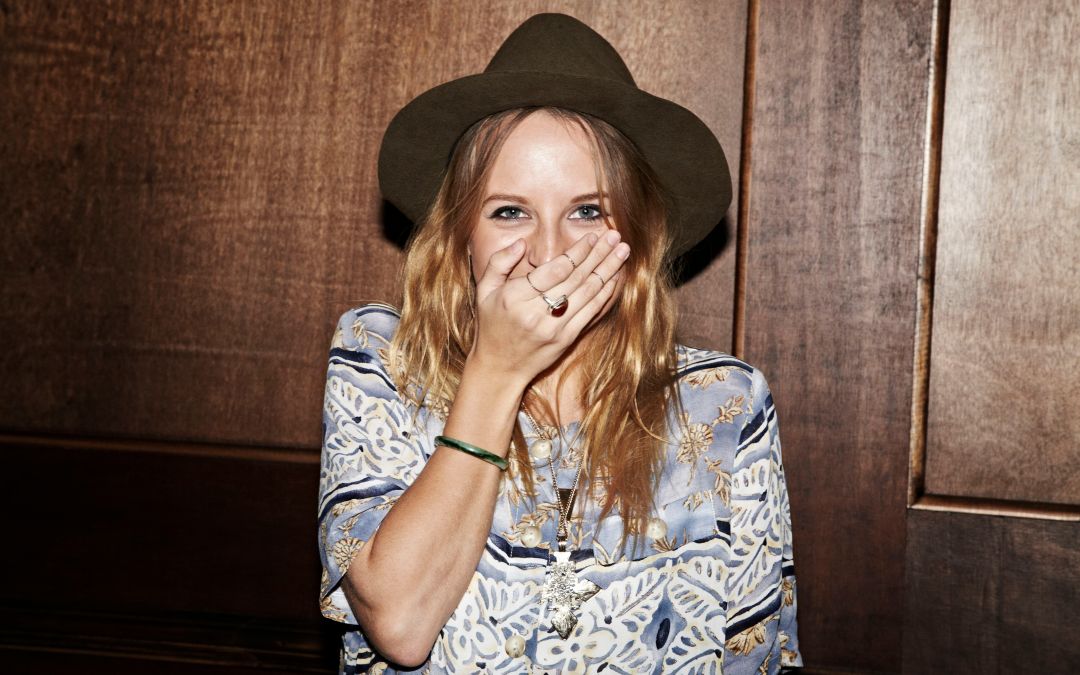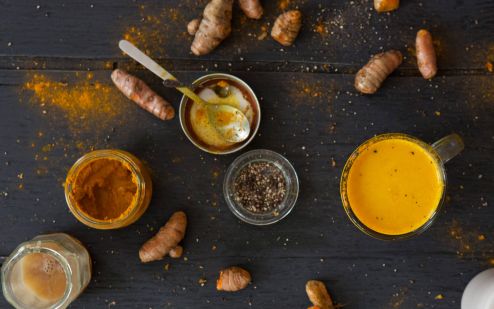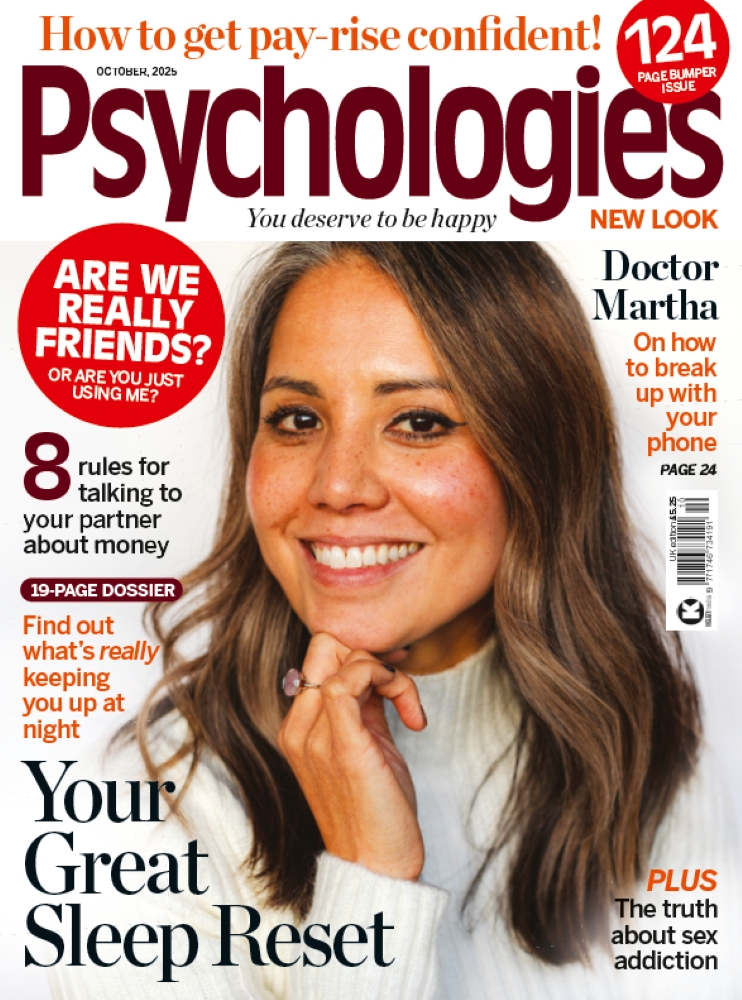How to embrace joy
Anita Chaudhuri allows her inner martyr to take a break as she lets go of suffering and unwraps a more sparkling range of emotions

The word most synonymous with festive cheer must surely be joy. From traditional Christian carols that proclaim ‘joy to the world’ to cards emblazoned with ‘Joyeux Noel!’, it’s a word as Christmassy as chestnuts roasting on an open fire or a box of liqueur chocolates.
Strange then, that joy is an emotion that we rarely acknowledge throughout the rest of the year, let alone prioritise. ‘We often believe that joy is childish; a bit silly or superficial, especially because it’s an emotion that lives in small moments that are easily overlooked,’ says Ingrid Fetell Lee, creator of the hit TED talk ‘Where joy hides and how to find it’ (2.4 million views) and author of Joyful: The Surprising Power Of Ordinary Things To Create Extraordinary Happiness (Ebury Publishing, £20). ‘In fact, research indicates that joyful moments are really powerful. Joy can improve our performance at work as well as change the way we interact with others, and it can make us 12 per cent more productive because it improves our working memory, the part of the brain we use for complex tasks during which we need to focus.’
According to Fetell Lee, the most counterintuitive behaviour people adopt concerning joy is the tendency to postpone it, particularly when we’re going through challenging times. ‘Typically, we might say: ‘I won’t go for dinner with my friends tonight – I’ll stay home and work on the project that’s stressing me out. I can have fun next week when it’s all over.’ The truth is that if we allow ourselves to experience joy during difficult times, it helps us to combat stress. Joy allows us to develop more resilience and find more meaning and purpose in the midst of challenges,’ she says.
Abandoning joy until a stressful time is over is a scenario that sounds all too familiar to me. I know I’ve definitely fallen into the trap of telling myself: ‘I don’t have time for a board game/art gallery/the pub right now; it’s all very well for people who don’t understand the meaning of busy.’ Even as I type those words I realise that suffering has become a badge of honour for me. But, by playing the martyr and putting joy on hold, who or what am I really serving? Does postponing fun improve the quality of my work or make me easier to be around? Feel free not to answer that one!
In fact, research by psychologist Barbara Fredrickson reveals that if you allow yourself to experience small moments of joy, such as buying yourself a bag of sweets, you will be more likely to see the bigger picture when solving complex problems, as well as coming up with creative solutions. I try to bear this in mind the next time I’m up against a stressful deadline – but it’s not as easy as it sounds.
‘Society dictates that the busier we are, the more successful we are. And we sometimes confuse achieving our goals with joy, or mistakenly believe that one will necessarily lead to the other,’ says coach Veronica Moreno. ‘Unfortunately, this leads us away from a state of being into constantly doing, and also comparing ourselves to others on social media. But it is only when we learn to spend time in the present moment and can be “with ourselves” that we are able to feel truly joyful. Joy isn’t about the fancy car, it happens on the inside.’
Can you feel it right now?
Moreno agrees that the essence of joy is fleeting and rooted in the present. ‘Dwelling on how happy you were in the past or fantasising about how happy you could be in the future if a certain set of circumstances comes about… neither of those mental states is properly joyful. On the other hand, joy isn’t about having to create an Instagram moment of, say, a holiday with access to an enormous swimming pool. It’s about savouring the little moments; the small details.’
Another immediate issue when it comes to creating more joy is that it’s an emotion that is frequently used interchangeably with happiness, even though there are distinct differences between the two. ‘Happiness is a broad evaluation about how we feel about our life over time and it encompasses a complex range of elements,’ explains Fetell Lee. ‘At times, the concept of happiness can feel quite vague. If someone were to ask you how happy you are right now, on a scale of one to 10, you would probably struggle to come up with an answer. You would have to ask yourself – how do I feel about my work, health, family and relationships?’
Joy, on the other hand, can be defined as an intense, momentary experience of positive emotion. ‘We can measure joy through direct physical expression – laughter; a feeling of wanting to jump up and down,’ says Fetell Lee. ‘It differs for everyone but what’s important is to start to pay attention to what it feels like in the body. It creates a physical reaction just as, for example, we can identify when we’re anxious because we have butterflies in our stomach and clammy hands. The more we notice that joy is a physiological experience, the more we can start to catch hold of those moments in our day. It’s a chain reaction that unfolds in the moment instead of being this far-off thing.’
According to the American Psychological Association, there are two recognised forms of joy: passive and active. ‘Passive joy involves tranquillity and a feeling of contentment with things just as they are. Active joy involves a desire to share one’s feelings with others. Both are associated with an increase in energy and feelings of confidence and self-esteem.’
This all sounds great in theory of course, but how can you start to generate more joy in your life when all you feel like doing is sitting at home alone pensively with a glass of wine while watching a grisly Nordic crime thriller? Fortunately, the experts have some foolproof strategies.
1. Become a joy detective
Fetell Lee observes that while the concept of the ‘downward mood spiral’ has been well documented, people often forget that you can develop an upward spiral too. We are programmed with a negativity bias – to pay attention to negative stimuli because early humans needed to be hypervigilant for threats such as marauding lions in order to survive. The more we pay attention to negative things, the more we notice them. But the same is true for positive stimuli.
‘It takes a little effort but it’s well worth doing,’ says Fetell Lee. ‘Start by keeping a joy journal to note down all the times during a given day that you experienced joy. What was happening? Who were you with and what sensory experiences were present? Record the details; the more specific, the better. If you get stuck in your head, a great question to ask – suggested to me by a six-year-old child – is: What was the silliest thing that happened to me today? That one question can reframe everything.’
2. Surround yourself with small pleasures
Although we’re forever being told that experiences, rather than possessions, are the root to happiness, Fetell Lee believes that is not the whole story. ‘We’re told that we’re supposed to find joy in our relationships with others or from finding inner peace but, when I was in design school, professors kept telling me that my creations sparked a feeling of joy. How could tangible objects spark joy? It was the start of my studies into the aesthetics of joy, exploring the connection between our physical surroundings and our emotions.’
Fetell Lee discovered that certain things seem to bring joy to people the world over: bubbles, in the bath and blown into the sky, rainbows, confetti, hot-air balloons, ice cream cones with sprinkles and maybe a flaky chocolate… There were unifying patterns – round shapes, bright colours and small objects repeated many times, such as polka dots and jelly beans. It sounds whimsical but there is scientific evidence to back it up. Studies reveal that the human brain responds more positively to curved shapes than angular ones, and also towards bright berry hues (because we needed to pay attention to those plants that were a source of food). Fetell Lee suggests experimenting by introducing more of these ingredients into your daily life.
I wore a new dress to work while I was writing this article – vivid red, covered with tiny fans – and had a large, unopened bag of jelly babies beside my desk. Both those silly, simple things – containing a few of the required components – definitely boosted my mood!
3. Adopt a morning gratitude practice
‘If you’re going to pick one practice to create a more joyful mindset, make it gratitude,’ says Moreno. ‘The best time to do this is first thing in the morning because we know that how we start our day sets the tone for what follows. You can meditate on gratitude, journal about it or even make a playlist to put you back in touch with what you’re most grateful for in your life,’ she advises.
‘Start small… Maybe appreciate a colleague for their sense of humour, instead of focusing on what you may dislike about them. But it’s not just about thinking pleasant thoughts – express your gratitude. Think about small things you can do, like bringing chocolate into the office as an appreciative gesture for the great team you work alongside. Change starts with making a choice about where to focus your energy.’
4. Schedule a weekly ‘joy date’
Schedule a joy date in the same way as Julia Cameron, writer of The Artist’s Way (Pan Macmillan, £16.99), prescribes an artist’s date. ‘Book time in your diary for a joyful activity,’ says Moreno. ‘It doesn’t have to be ambitious, it could be a walk in the park, reading a book you love or journalling. Give yourself permission to make joy a priority in your life.’
Moreno believes joy is crucially important to health and the reduction of stress because joyful activities help keep us rooted in the present. ‘We have a tendency to think that self-care should involve a trip to a spa and an expensive massage – but allowing yourself to enjoy life is the ultimate in self-care.’
5. Go on a joy diet
Fetell Lee believes many of us are suffering from ‘sensory starvation’. ‘We have an array of senses that allow us to interact with the world, yet most of us spend our days in front of a computer. We have hypersensitive fingers and all we give them to do is tap away on a keyboard; we have hypersensitive noses, yet all we give them to smell is recycled air…’ She suggests that a fast route to experiencing more joy is indulging in things to make our senses come alive. When we stop cutting ourselves off from the sensory world, we are less likely to direct that hunger towards things such as food, drink or drugs.
The antidote is to put yourself on a joy diet. Start by listing the five senses and, under each, write down tangible things that bring you pleasure. If you struggle with a particular category, that’s a clue about where you should focus your attention.
My list included Queen Mary’s Rose Gardens, cheese on toast, violet bubble bath, my cashmere yoga blanket, stroking the bark of a tree, Barber’s Adagio for Strings and the pastel painted houses near Camden Road. In fact, the simple act of writing down the specific things that bring me joy had an immediate effect on my mood! The truth is that it’s easy to forget what brings us joy in the first place. This reminder prompted me to run myself a bath and cue up the music I love. Did I actually eat cheese on toast surrounded by bubbles? That’s for joyful me to know…
Image: Getty









